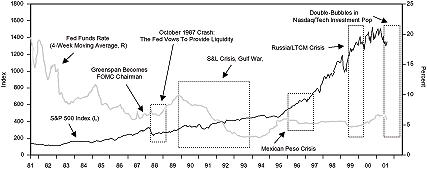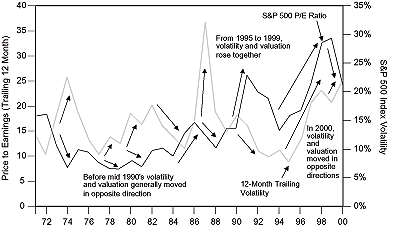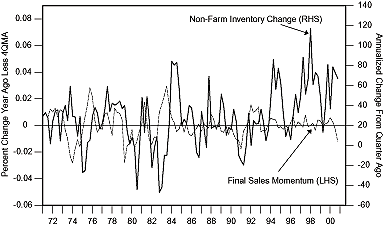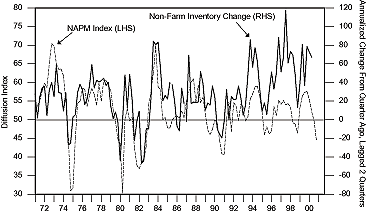Last February 1 , I introduced you to my roommate, that lovely lady in my arms in the photo up to the left: Ms. Morgan le Fay McCulley. As faithful (for which I’m grateful!) readers will recall, Ms. Morgan is my 11-year-old son Jonnie’s delightful Netherlands Dwarf rabbit, who he generously “loaned” to me while my family was bi-coastal during the first year after my return to PIMCO. Morgan was a wonderful companion, entertaining me for hours as I read and worked at the apartment.
The only problem was that she insisted on too much fun, playing hide and seek for at least 30 minutes before she’d “let” me catch her at evening’s end, to return to her hutch on the patio. I’d swear after each episode that the apartment was going to become off limits to the lady, but after a day or two, I couldn’t resist the joy of watching her hop about, and we’d go through the routine yet again. Sweet memories, and fortunately just memories now, as my family is reunited here in Newport Beach.
Ms. Morgan still has her hutch, and there’s no way my wife Karen will let her roam about the house. But with the house comes a backyard, to which I’ve added a six foot playground for Morgan, so she and I still get to pal about while I’m doing such silly things as re-reading Keynes for the nth time. Jonnie’s convinced that she’s no longer his pet, but mine! He just might be right.
Revisiting the Greenspan Put
Which brings us to the matter of Fed Chairman Greenspan, and his love-hate relationship with his pet, the U.S. stock market. Recall, I introduced you to Ms. Morgan not just to brag about my son Jonathan (for which I will never apologize!), but to draw attention to the Greenspan Put — that metaphysical downside protection for animal-spirited risk taking underwritten by Greenspan, which was fueling a bubble in high P/E stocks. And I admit, I had an axe to grind: Mr. Greenspan was refusing to acknowledge that the bubble was a bubble, but was nonetheless trying to prick the non-bubble with interest rate hikes non-targeted at it. I felt a much better approach would be to hike margin requirements, taking some load off the interest rate weapon. Mr. Greenspan disagreed, of course, out of necessity – you can’t use a rifle to shoot a skunk that you deny exists!
Thus, Greenspan and the FOMC walked themselves into a cul de sac where the skunk lived, and closed the gate. They were clearly ticked that the “wealth effect” from bubbling stocks was propelling demand growth faster than potential supply growth, putting downward pressure on the unemployment rate, putatively raising cyclical inflation risks. But having sworn off using a rifle aimed at the skunk, they were left “needing” to fire their way out of the cul de sac with shotgun blasts of interest rate pellets aimed at all things moving. And so they did, even after the NASDAQ crashed in March 2000, doubling the quotient of saltpeter to 50 basis points in May 2000, with the explicit threat that there was more from where that came.
To my way of thinking, that May move, and the continuing “official” threat of further tightening until November 2000, was an explicit Fed attempt to devalue the notion of any Greenspan Put: secular dip buyers would be punished for believing that Greenspan would always be there to underwrite their foolishness, as displayed in Figure 1. And the Fed was “successful” in this endeavor, as equity P/E’s (finally!) started moving in the opposite direction of market volatility, as shown in Figure 2.
Stocks' Mantra: When Stuff Happens, The Fed Eases

Figure 1
Source: Bloomberg
Equity P/Es Finally Fall In The Face Of Rising
Volatility, As The Fed Seeks To Devalue
The Greenspan Put

Figure 2
Source: Steve Kim at Merrill Lynch
Well and good, of course, except for the collateral damage of a collapse in final sales momentum, which exposed serious irrational exuberance in inventory accumulation, as shown in Figure 3. And producers are responding in light speed fashion, with purchasing managers using all that fancy-dancy new technology to put the manufacturing sector into serious recession, as shown in Figure 4.
With Final Sales Slowing Precipitously,
Producers Now Have Inventories
Out The Wazoo!

Figure 3
Source: Bureau of Economic Analysis
Purchasing Managers To The Triage Tent

Figure 4
Source: National Association of Purchasing Managers & Bureau of Economic Analysis
The Fed Is Scared: Good
In response, the Fed is now scared stiff that the manufacturing recession is going to morph into an economy-wide recession. And well the Fed should be scared, because its tightening fingerprints are all over the cul de sac crime scene, even if policymakers refuse to admit it. But what the hey about the blame; to his credit, Greenspan now recognizes that it is indeed a Minsky Moment 2 : a self-feeding, not self-correcting downward spiral that will stop only if and when policy makers restore a climate of animal-spirited risk taking.
While I’m certainly critical of the Fed, and Mr. Greenspan in particular, for their culpability in the current sorry state for economic affairs, I’ve actually become more optimistic over the last 30 days about prospects for an upturn in the economy on a twelve-month horizon. The Fed now recognizes the debt deflation enemy, and is committed to fight it with “rapid and forceful” easing as the FOMC said yesterday, after cutting Fed funds a 100 basis points in one month. I look for 50 basis point cuts at each of the next three FOMC meetings, at least. Fed funds at 4% by July 4!
Let's Get Keynesian In Fiscal Policy, TooExceedingly important, too, in my visceral forward-looking optimism is Mr. Greenspan’s declaration a week ago today of victory in the war against the national debt. This was a profound secular reversal in fiscal policy, founded on the following logic:
- If the secular horizon for productivity growth is much improved, as Greenspan has pounded the table, then current settings for spending and taxes will result in an ever-rising fiscal surplus.
- If these settings are not changed, national debt will be rapidly repaid and, thereafter, there will be a “need” for the federal government to acquire very large holdings of private sector assets.
- This would be an abomination to capitalistic instincts, verities, and principles; therefore, taxes should be cut.
Mr. Greenspan could have given this speech at any time over the last couple of years; his argument is grounded in trend-line arithmetic. But he didn’t. In my view, he chose this moment to play some weighted average of Socrates, Solomon and Oprah because he is (a) one of the finest politicians ever to walk the streets of Washington; (b) a card-carrying, Ayn Rand-Republican; and (c) a man who wants to have in place the right “atmospherics” for good ole fashioned Keynesian tax cuts as a prophylactic against recession.
Nothing wrong with any of that, even if I happen to have a different personal philosophy. Right up front last Thursday, Greenspan said he was speaking “ for myself and not necessarily for the Federal Reserve.” To be sure, it’s a bit duplicitous for him to distance himself from his role as head of the Fed, since he rules (yes, rules!) the place with an iron fist. But honesty demands paying him credit for his honesty: He acknowledged that he was speaking personally and normatively.
Greenspan believes that a smaller government (as a percent of GDP) is always preferable to a larger government, on quintessential Ayn Rand grounds (more so than Republican grounds) of microeconomic allocative efficiency. Thus, while Greenspan surely recognizes that the “arithmetic” problem of continuing surpluses post-retirement of the national debt could be “solved” with increased government spending, including on human capital formation, he simply does not trust Congress to spend wisely. Put differently, Greenspan has visceral disdain for the notion of public investment for public goods, because he views few economic endeavors as “public goods.”
Thus, Greenspan philosophically believes that “excess” tax monies should be returned to the people, to prevent Congress from spending. Essentially, he is borrowing a page from Ronald Reagan, who famously (or infamously) declared over two decades ago that Congress should be treated as children and, as with children, “ if you want them to cut spending, cut their allowance.” Whether you agree or disagree with that philosophy, it is now the force de jour in Washington, with the unambiguous endorsement of the great philosopher king and master of the universe, Alan Greenspan.
This is a profound secular reversal of a fiscal policy in place ever since Mr. Greenspan cost the elder Mr. Bush his job, forcing him to break his “read my lips” pledge not to hike taxes, as a quid pro quo for aggressively easing monetary policy — in a recession! Now, Mr. Greenspan gives out 535 free passes to cut taxes, even as he’s slashing rates aggressively. I have no doubt that our nation’s great legislators will know how to use those passes.
Don't Short American HedonismIn the end, this double-barreled package of monetary and fiscal stimulus will be successful if, and only if, it sparks an increase in animal-spirited risk taking. Irrational exuberance, once deemed an affliction, has now become Greenspan’s object of affection. The Greenspan Put is back in the money! I expect it to work, yet again.
I’m happy. Morgan le Fay is happy. And through holes in the floor of heaven, Keynes and Minsky weep tears of joy.
Paul A. McCulley
Managing Director
February 1, 2001
paul.mcculley@pimco.com
1 "Me and Morgan le Fay," Fed Focus February 8, 2000
2 "Capitalism's Beast of Burden," Fed Focus, January 4, 2001
